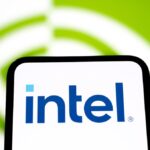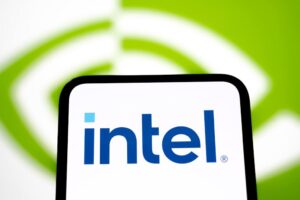We recently looked at Goldman Sachs’ List Of Stocks That Hedge & Mutual Funds Love & Hate: 28 Stocks On The Mutual and Hedge Funds Radar. In this piece, we will look at where NVIDIA Corporation (NASDAQ:NVDA) sits on the fund managers’ radar.
The surge in interest surrounding artificial intelligence has meant that the stock market in 2024 has continued to surprise. Just like most Wall Street analysts were left scratching their heads after worries of a recession proved to be unfounded, this year, analysts have continued to revise their year end targets of the flagship S&P index multiple times. Take the example of investment bank Goldman Sachs. Its latest index year end target was released in October, and as of now, the bank believes that the index will close at 6,000 points by the end of this year.
Before the October target, the bank had upped its year end estimate to 5,600 points in June. This was based on optimism for big tech stocks and the rush surrounding AI that continued to fuel them. This had added 400 points to the previous target of 5,200 points which was released in February, and this in turn had added 100 points to the previous upward revision of 5,100 over the first Goldman Sachs S&P year end target of 4,700 points.
Safe to say, the market has beaten expectations in 2024. Its recent value of 5,832 points leaves it just 2.8% shy of Goldman’s latest 2024 estimate. The index is up by 23.6% year to date, and to see just how much its returns have been driven by artificial intelligence, consider the fact that the Philadelphia Stock Exchange’s semiconductor stock index is up 27.8% year to date. AI, and particularly semiconductor stocks, continue to make their mark and the key question now is whether this performance will be sustained after the third quarter earnings season.
The Q2 season was nothing short of fireworks for some of the biggest AI names. Two firms in particular come to mind when we reminisce. The first is Wall Street’s AI darling which is known for making the best AI GPUs in the world, and the second is the firm behind Windows OS that has invested billions of dollars in the AI upstart OpenAI. Both these stocks did well in the first half of 2024 but pared back some of their gains in H2. Starting from the GPU company, its stock is up 186% year to date. However, from the peak in June which had marked 181% in YTD gains back then, the shares are up by a modest 1.84%. For the software company, the shares peaked at 26% year to date returns before the Q2 earnings season, and since the peak, they are down 10.4%.
The difference in their share price appreciation isn’t surprising even though it might appear to be so. Simply put, the reason the GPU maker has posted stronger returns is its products are the immediate need of the AI industry. On the other hand, the software company’s products are part of a later wave of AI which counts upon strong demand for AI products within the business world to enable it to turn a profit. Turning a profit is key since it has already invested billions of dollars into OpenAI. If you’re interested in learning more about the minutiae of AI investing, do check out Goldman Sachs’ Best Phase 2 AI Stocks: Top 24 High Conviction AI Stocks.
Shifting gears, within this dynamic stock market environment, mutual funds appear to be performing well. Research from BofA covering their performance for the first quarter shows that 64% of actively managed large cap US mutual funds beat their benchmarks. This was a sizeable jump over 38% of funds beating the benchmarks last year, with the bank speculating that a broadening of equities performance was part of the reason driving the returns. A study from The Wall Street Journal adds to this. It looks at the performance of large cap growth funds during H1 2024 and shares that the Magnificent 7 stocks drove large cap growth funds to the top of the mutual fund pyramid. The survey looked at 1,218 funds to determine that just 15% were in the red, with the average 12 month return of all the surveyed funds being 16.5%.
While on one end of the spectrum are the risk averse mutual funds, on the other, are hedge funds that chase alpha through leverage. This risk means that the funds can accumulate large losses that take years to recover from. This is the case for some of the funds, according to Goldman’s latest industry report. It shows that Tiger Global, Whale Rock, and Third Point which fell 50%+, 45%, and 21.8% in 2022 still haven’t recovered. In 2023, the three respective funds posted 28.5%, 18%, and 4.1%, while their performance through July was 10.7% and 10.9% for Tiger Global and Third Point and 18.9% through May for Whale Rock.
In fact, GS’ data shows that roughly one third of long-short funds are yet to recover their 2022 losses, as they are joined by 31% of event driven funds and 45% of macro driven funds. However, some of the top performing funds in the first half were Bridgewater Associates and Citadel, which posted 14.1% and 13.7% in returns respectively. The top performer among hedge funds appears to be AQR Capital with its long/short fund delivering 16.3% in returns.
Our Methodology
To make our list of stocks that hedge funds and mutual funds love and hate, we divided Goldman’s Hedge Fund Trend Monitor and Mutual Fundamentals report into four categories. These categories are stocks that both avoid, stocks that both love, and stocks favored by one but avoided by the other. Stocks within these categories were ranked by the number of hedge funds that had bought the shares during Q2 2024. To learn more about the number of top hedge fund investments in some of these stocks, you can check out Goldman Sachs’ Best Hedge Fund Stock Picks: Top 20 Stocks.
Why are we interested in the stocks that hedge funds pile into? The reason is simple: our research has shown that we can outperform the market by imitating the top stock picks of the best hedge funds. Our quarterly newsletter’s strategy selects 14 small-cap and large-cap stocks every quarter and has returned 275% since May 2014, beating its benchmark by 150 percentage points. (see more details here).
A person looking intently at a broker’s screen full of stock information, implying the company’s stock market expertise.
Number of Hedge Fund Holders In Q2 2024: 179
Category: Most popular with HFs and underweight among mutual funds
NVIDIA Corporation (NASDAQ:NVDA) is the leading semiconductor designer in the world courtesy of its AI chips. These have propelled the firm to become the most valuable semiconductor company on the planet courtesy of its latest market capitalization of $3.21 trillion. NVIDIA Corporation (NASDAQ:NVDA)’s Blackwell chips are the hottest product in the semiconductor industry and have seen their capacity booked out months in advance. NVIDIA Corporation (NASDAQ:NVDA) also benefits from its CUDA software which allows users to tightly control their chip use for accelerated computing. Accelerated computing is at the heart of NVIDIA Corporation (NASDAQ:NVDA)’s hypothesis, with CEO Jensen Huang believing that even if the AI market slows down, the world’s data centers will nevertheless have to spend $1 trillion to upgrade existing infrastructure. High prices, product delays, lower AI monetization, and a greater shift towards custom AI chips carry the potential to detract NVIDIA Corporation (NASDAQ:NVDA).
Baron Funds mentioned NVIDIA Corporation (NASDAQ:NVDA) in its Q2 2024 investor letter. Here is what the firm said:
“More recently, however, we’ve entered the period of doubts and questioning, some of which is real and normal in the first stages of a new paradigm, and some of which is prompted by short sellers. Given the explosive returns of NVIDIA and other AI leaders, AI bears and fear mongers have been comparing the current AI market winners with the internet bubble of the late 1990s/early 2000s, and NVIDIA’s stock move today with Cisco’s back then. First, while many stocks were trading at nosebleed valuations and on made up metrics (such as price per eyeballs) before the bursting of the internet bubble, as we’ve said many times, the internet proved to transform our world and create the digital age we are now living in. Second, while NVIDIA’s stock price inflection has been nothing short of unprecedented for a company of its size, it was fueled almost entirely by explosive growth in revenues, earnings, and cash flows– not multiple expansion. Over the last 12 months, NVIDIA’s stock has eectively tripled, but its forward P/E multiple has remained essentially flat, because NVIDIA blew away Wall Street expectations despite being covered by over 60 sell-side analysts, who have increased their forward projections every single quarter. In my career, the only comparative analogue is when Apple first introduced the iPhone and stunned Wall Street with its growth. In contrast, most of Cisco’s move in the late 1990s was due to multiple expansion. At its peak, Cisco traded at a P/E ratio over 130 times, more than quadruple its five-year average of 37 times. At the end of the second quarter, NVIDIA traded at a P/E ratio of 40 times, equal to its five-year average, and at a P/E to growth (or PEG) ratio for 2025 of 0.8 times, as consensus expectations are for NVIDIA to grow earnings per share 40% next year.
Overall NVDA ranks 13th on our list of stocks that fund managers love and hate according to Goldman Sachs. While we acknowledge the potential of NVDA as an investment, our conviction lies in the belief that some AI stocks hold greater promise for delivering higher returns and doing so within a shorter timeframe. If you are looking for an AI stock that is more promising than NVDA but that trades at less than 5 times its earnings, check out our report about the cheapest AI stock.
READ NEXT: $30 Trillion Opportunity: 15 Best Humanoid Robot Stocks to Buy According to Morgan Stanley and Jim Cramer Says NVIDIA ‘Has Become A Wasteland’.
Disclosure: None. This article was originally published on Insider Monkey.








